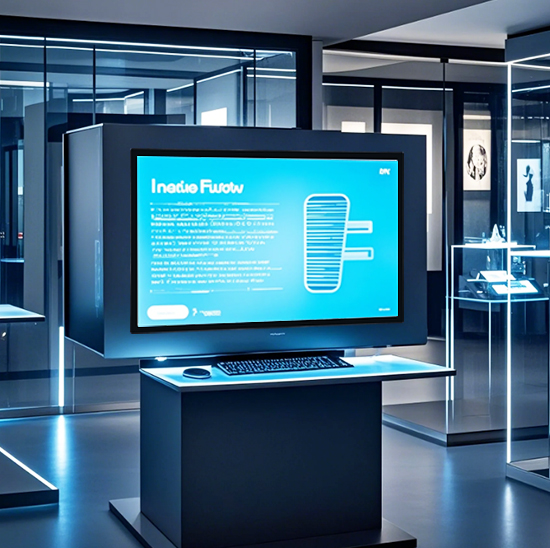In high-volume manufacturing environments—where production lines run 24/7, equipment operates at peak capacity, and every second counts—Industrial Touch Monitors are the workhorses of operational control. These screens manage everything from tracking assembly line speeds to monitoring machine diagnostics, making their reliability non-negotiable. Unlike standard industrial monitors, heavy-duty models must withstand constant use, harsh conditions, and the demands of high-volume tasks (such as automotive assembly, bulk packaging, or electronics mass production). A single failure can disrupt entire workflows, leading to costly delays and missed deadlines. This guide will break down the essential features of heavy-duty Industrial Touch Monitors, how to select the right model for your high-volume tasks, and maintenance tips to keep them running smoothly—ensuring your operations stay on track.

Critical Features of Heavy-Duty Industrial Touch Monitors for High-Volume Tasks
High-volume environments demand more than basic functionality. These features are non-negotiable for heavy-duty performance:
1. Rugged Construction to Withstand Constant Use
In facilities where operators interact with screens hundreds of times daily, durability is key:
Housing material: Choose monitors with aluminum or stainless-steel casings (resistant to dents, corrosion, and impacts from tools or equipment).
Screen protection: Tempered glass with a hardness rating of 7H or higher (prevents scratches from repeated touch or accidental contact with sharp objects).
Scellage: IP66 or IP67 rating (fully dust-tight and water-resistant, critical for environments with frequent cleaning or liquid exposure).
2. 24/7 Reliability and Heat Resistance
High-volume tasks mean monitors run continuously, generating significant heat:
Cooling systems: Active fans (for larger screens) or passive heat sinks (for compact models) to prevent overheating during non-stop operation.
Component quality: Industrial-grade capacitors and circuit boards rated for 100,000+ hours of use (équivalent à 11+ years of continuous operation).
Operating temperature range: -20°C à 70°C (handles fluctuations from machinery heat or facility climate changes).
3. High-Response Touch Technology
In fast-paced environments, slow or inaccurate touch inputs waste time:
Touch type: Projected capacitive (PPCE) for multi-touch support and quick response (ideal for tasks requiring rapid menu navigation).
Gloved operation: Sensitivity adjustments to work with thick industrial gloves (no need for operators to remove gloves, speeding up workflows).
Calibration: Automatic drift correction to maintain accuracy over time (avoids frequent manual recalibration).
4. Compatibility with High-Volume Systems
Heavy-duty monitors must integrate seamlessly with the tools driving high-volume production:
Connectivité: Multiple ports (Ethernet, USB-C, RS485) to link with PLCs, Systèmes MES, and barcode scanners.
Software support: Compatibility with industrial operating systems (Fenêtres 10 IoT, Linux) and SCADA/HMI software (Par exemple, Siemens WinCC, Discussion sur l'usine Rockwell).
Expandability: Support for external peripherals (Par exemple, keyboards, mice) for data-heavy tasks like batch tracking.
How to Select Heavy-Duty Industrial Touch Monitors for Your High-Volume Task
Choosing the right monitor requires aligning features with your specific operational needs:
1. Assess Your Environment and Workflow
Task frequency: If operators interact with the screen 50+ times per hour, prioritize PCAP touch and scratch-resistant glass.
Environmental hazards: For wet environments (Par exemple, food packaging), opt for IP67 and stainless-steel housing. For dusty settings (Par exemple, metal fabrication), IP66 is essential.
Space constraints: Open-frame monitors save space on crowded equipment, while panel-mount models work best for control rooms.
2. Match Screen Size to Task Complexity
Small screens (10–15 inches): Suitable for simple tasks (Par exemple, commandes de démarrage/arrêt, basic status updates) in tight spaces.
Medium screens (17–24 pouces): Ideal for mid-complex tasks (Par exemple, monitoring 3–5 production metrics, adjusting speeds).
Large screens (27+ pouces): Best for high-complexity tasks (Par exemple, overseeing multiple production lines, analyzing real-time yield data).
3. Evaluate Total Cost of Ownership (TCO)
While heavy-duty monitors have higher upfront costs, their TCO is lower over time:
Compare warranty length (aim for 3–5 years) and maintenance costs (Par exemple, replacement part availability).
Factor in downtime savings: A reliable monitor that reduces 1 hour of monthly downtime saves ~
2,000/yearforalineproducing100units/hourat20/unit.
Maintenance Tips to Extend the Lifespan of Heavy-Duty Industrial Touch Monitors
Even rugged monitors need care to perform in high-volume settings:
1. Daily Cleaning for Optimal Performance
Use a lint-free microfiber cloth with distilled water or isopropyl alcohol (70%) to remove oil, poussière, and debris—buildup can slow touch response.
Avoid harsh chemicals (Par exemple, ammonia-based cleaners) that damage protective coatings.
2. Regular Inspections of Connections and Cooling
Hebdomadaire: Check cables for tightness (loose connections cause screen flickering) and clean fan vents (dust buildup blocks cooling).
Monthly: Verify that touch calibration is accurate (use built-in tools to test responsiveness across the screen).
3. Proactive Replacement of Wear Parts
Every 2–3 years: Replace fans (if applicable) to prevent overheating as bearings wear down.
As needed: Replace screen protectors (if using removable films) to maintain touch sensitivity.
FAQs About Heavy-Duty Industrial Touch Monitors
Q1: Can heavy-duty Industrial Touch Monitors handle outdoor high-volume tasks (Par exemple, construction equipment production)?
A1: Yes—look for models with sunlight-readable screens (1,000+ luminosité des lentes) and wide temperature ranges (-30°C to 80°C) to withstand outdoor conditions.
Q2: How do these monitors differ from standard industrial touch monitors?
A2: Heavy-duty models have reinforced housing, higher IP ratings, longer lifespans (100,000+ hours vs. 50,000+ for standard), and better heat management—critical for 24/7 high-volume use.
Q3: What’s the typical lifespan of a heavy-duty Industrial Touch Monitor in high-volume production?
A3: Avec une maintenance appropriée, 7–10 years. Screens in less harsh environments (Par exemple, electronics assembly) may last longer than those in wet/dusty settings.
Q4: Can we retrofit existing equipment with heavy-duty Industrial Touch Monitors?
A4: Yes—most manufacturers offer flexible mounting options (VESA, montage sur panneau, open-frame) to fit existing machinery. Check with suppliers for compatibility with your equipment’s dimensions.
Heavy-duty Industrial Touch Monitors are the backbone of high-volume manufacturing, ensuring seamless operation, réduire les temps d'arrêt, and supporting fast-paced workflows. By prioritizing rugged construction, 24/7 fiabilité, and task-specific features, you can select a monitor that keeps up with your production demands.
If you’re unsure which heavy-duty Industrial Touch Monitor fits your high-volume task (Par exemple, need help matching screen size to your workflow, or want to compare models for wet vs. dusty environments), Remplissez le formulaire sur notre site Web. Our industrial display experts will analyze your operational needs, environnement, and budget to recommend a tailored solution—helping you minimize disruptions and maximize productivity.

